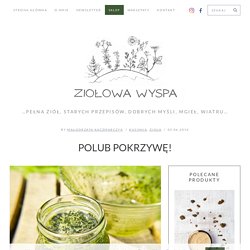

Eat Edible Flowers List - Best Flower Wallpaper. Many fruiting trees and shrubs have flowers you can eat.

Use in salads dips and cold soups drinks desserts. Edible Flowers Nz List Of Edible Flowers Edible Flowers Edible Garden The leaves flowers and stems are edible. Eat edible flowers list. Thyme flowers make great garnishes. Common sage sambucus canadensis. Summary dandelions are considered weeds but double as a highly nutritious edible flower.
Foraging violets and brewing tea - Feathers in the woods. I like to do a little foraging every year in early spring.

I'm ready for my garden to start producing and it's entirely too early, but the warm weather has me itching for garden activities! So I do some foraging since many native plants are ready to be harvested before the garden even gets planted. Winter. Dandy. Five Free Apps for All Levels of Foraging : MOLD. Foraging can tend to be a bit daunting.

The idea of going into nature and actually eating what you find there is a skill that most of us have never exercised. Luckily, we live in the age of technology, and “there’s an app for that.” Below, we rounded up five of our favorite apps for foraging.
Kaveldun - träskmarkernas snabbköp - Utsidan. October. 52 Wild Plants You Can Eat - Updated. September. July. Sok brzozowy, klonowy i inne: prawie wszystko o spuszczaniu soków drzew. Wiele razy pisałem o różnych patentach na spuszczanie soków drzew.

Dostaję dużo technicznych uwag – w końcu postanowiłem zrobić galerię zdjęć, gdyż jeden obrazek jest wart tysiąca słów. Połączyłem też wszystkie posty o sokach drzewnych w jeden, żeby łatwo było szukać i żeby niczego nie pominąć. W dolnej części artykułu także kilka linków do naukowych opracowań na ten temat. Drzewa już niedługo puszczą soki. Zawsze o tej porze dostaję różne zapytania o spuszczaniu soku z drzew.
Kiedy soki startują? Soki zaczynają płynąc w drzewach w górę na przedwiośniu, zwykle gdy dzienna temperatura wynosi ok. 8 C. Czy wszystkie startują równo? Nie zawsze, to zależy od sezonu. Czy soki płyną równo cały dzień? Nie. Czy sok z tego samego gatunku ma zawsze tyle samo cukru? Nie. Które drzewo ma najsłodszy sok? Zbieramy wiosenne zioła. Porcja witamin i minerałów z samodzielnie zbieranych ziół postawi nas na nogi wiosną i pozwoli pokonać objawy przesilenia wiosennego.

Wiosnę warto również wykorzystać na gromadzenie zapasów ziół na sezon jesienno-zimowy oraz samodzielne wykonanie przetworów, które pomogą zdrowo przetrwać jesienny okres przeziębieniowy. Małgorzata Kaczmarczyk. Chciałam was zachęcić do zabawy z pokrzywą i rozpowszechnienia jej niesamowitych właściwości.

Oto zasady. Jak odróżnić rumianek od rumianu, maruny i złocienia. Czeremcha razy dwa. Dlaczego właściwie “czeremcha razy dwa”?

Bo po pierwsze – wpis jest o dwóch różnych czeremchach, a po drugie – to dwa przepisy z dwóch różnych światów – kosmetycznego i kulinarnego. Dziś o kwiatach czeremchy, ale nie uciekaj, jeśli potrzebujesz sposobu na zagospodarowanie owoców. Po prostu przejdź na koniec wpisu, a tam znajdziesz przekierowanie do jesiennego, owocowego artykułu o czeremsze. Kwitnąca czeremcha zachwyca mnie niemal od zawsze.
Foraging: 52 Wild Plants You Can Eat. Here are a few common North American goodies that are safe to eat if you find yourself stuck in the wild: Blackberries:

Foraging the wild for plants and stuff to eat. Foraging: 52 Wild Plants You Can Eat. Foraging. Herb tea. SPRING. Adventures in Stalking Wild Asparagus. Winter Foraging in Cold Climates: 50+ Wild Foods in the Snow. Foraging is a year-round source of food and fun, no matter where you live.

Our ancestors didn’t have the luxury of taking the winter off from food gathering, they just had to get more creative. There are hundreds of wild foods you can forage in winter, even in cold climates. Here in Vermont, our frost-free growing season is only about 100 days long. Gardeners know how to plant frost hardy vegetables to extend the season and die-hard foragers don’t take any months off. So what can you forage in when temperatures are 30 below outside?
It turns out…more than you’d think. Foraging Wild Valerian For Better Sleep. When I first started studying herbs in high school, I didn’t really understand why anyone would need herbs for sleep.

I slept perfectly well, waking up in the morning was the real problem. Foraging and Using Yarrow (Achillea millefolium) Yarrow (Achillea millefolium) is one of the most useful and widely available herbs you can find. Once you know how to identify yarrow, you’ll see it everywhere. The plant has dozens of traditional uses, most of which have been validated by modern medical science. When I first started my journey as a herbalist in my early teens, I was determined to find yarrow.
Foraging and Using Yarrow (Achillea millefolium) 50+ Edible Wild Berries & Fruits ~ A Foragers Guide. Edible wild berries and fruit are some of the most rewarding things to find when you’re out foraging wild edible plants. Unlike roots and greens, wild berries and fruits often don’t require preparation and cooking. That makes them very accessible for beginners and provide a sweet bit of instant gratification.
Wild fruits within the same genus tend to prefer similar habitats, which means when you stumble onto a patch of wild berries there are likely other similar tasty edibles nearby. Foraging and Using Elecampane. Elecampane (Inula helenium) is a perennial herb that grows wild around the world. Foraging & Using Staghorn Sumac. Staghorn sumac (Rhus typhina) grows just about anywhere and everywhere all across the eastern part of the United States. All it needs is an abandoned field, highway median or roadside ditch and it’s happy as can be. There’s nothing like a tasty plant that just loves to grow in just about anywhere, it’s a forager’s dream.
Everyone has their gateway plant into foraging, and more often than not it’s something like fresh dandelions on the lawn or a sweet patch of wild chanterelles happened upon in the woods. Mine’s a bit different you see. For me, sumac changed everything. I’d been into herbal medicine since my early teens, but I never really considered myself a forager. Foraging Morel Mushrooms. Finding morel mushrooms for the first time is a dream come true for most beginning foragers. Even decades later, seasoned foragers still enjoy the thrill of identifying morels every spring. Foraging Marsh Marigold (Caltha palustris) Marsh Marigold (Caltha palustris) is one of the first wild edible plants of spring. It’s commonly cooked as a pot-herb, and people once welcomed it to their tables after a long winter of stored food. Spring is always slow to arrive here in the North country, and we don’t see our first dandelions until mid-May. Contrary to popular belief, however, dandelions are nowhere near the first flowers of spring.
Months before the first dandelion, hardy spring greens like marsh marigold, stinging nettle, chickweed, yellow dock, and burdock send out tender edible green leaves. Foraging Elderberries. Learn how to identify and forage for elderberry, plus ideas on how to work with and use this exceptional medicinal berry! (This post is a contribution by Melissa Keyser) As you probably can tell by now, but I am a dreamer. I spend lots of time thinking of future things. One of which is my future, forever garden.
Plantain Herb: Foraging and Using Plantago Species. Learn how to identify and forage for plantain, a valuable first-aid “weed” that’s easy to find- perfect for beginning foragers and medicine makers! (This post was contributed by Melissa Keyser.) I just returned home from traveling in Vermont, New Hampshire, and Maine for two weeks. I love exploring new areas to experience different ecosystems, discovering the native flora and fauna. The East Coast of the US is such a different climate than the West Coast that I’m knowledgeable about. So many new-to-me plants I had no idea what they were, or different species of the genus I’m familiar with.
But one plant that I recognize, regardless of where I travel to, is the humble plantain. Foraging Miner’s Lettuce. Foraging Spruce Tips (and Other Conifer Tips) How to Forage in Your Own Backyard – Wild Edible Plants.
Våtarv – en delikatess - Gröna rader. Ät upp din våtarv! Den är riktigt god och väldigt näringsrik! Våtarv självsår sig ymnigt och trivs överallt där det finns fuktig näringsrik jord, så passa på att förgylla salladen eller gör en näringsrik smoothie. Foto: Stefan.lefnaer/Wikimedia/CC BY-SA 4.0. Kan man äta maskrosor? NATURSPANARNA. Videbarkste. Vide och sälg och pil är så livskraftiga att de lätt börjar växa som ogräs. Men i barken finns värdefulla aktiva ämnen. Vide, sälg och pil tillhör alla släktet Salix. Gemensamt för dem alla är att barken innehåller salicylsyra, salix-släktet är faktiskt ursprunget till värktabletten.
Sedan stenåldern har man kokat te av pilbark eller videbark för att ta ner feber och stilla värk, och än idag tycker jag att det finns en poäng i att använda salixbark istället för värktabletter. Många är känsliga mot salicylsyra, och astmatiker eller folk med magkatarr bör helt undvika ämnet. Försommaren är rätt tid att skörda barken, då den lossnar lätt från veden. Torka videbark. Wild Plants You Can Eat: A List of Edible Wild Plants.
What to Forage in Spring: 20 Edible and Medicinal Plants and Fungi. Grow Forage Cook Ferment.